2023 Moto Guzzi V100 Mandello full run-down
Moto Guzzi are revolutionising their offerings in 2023 with the arrival of the V100 Mandello and two variants are now confirmed alongside the limited edition run of 1913 Aviazione Navale specials.
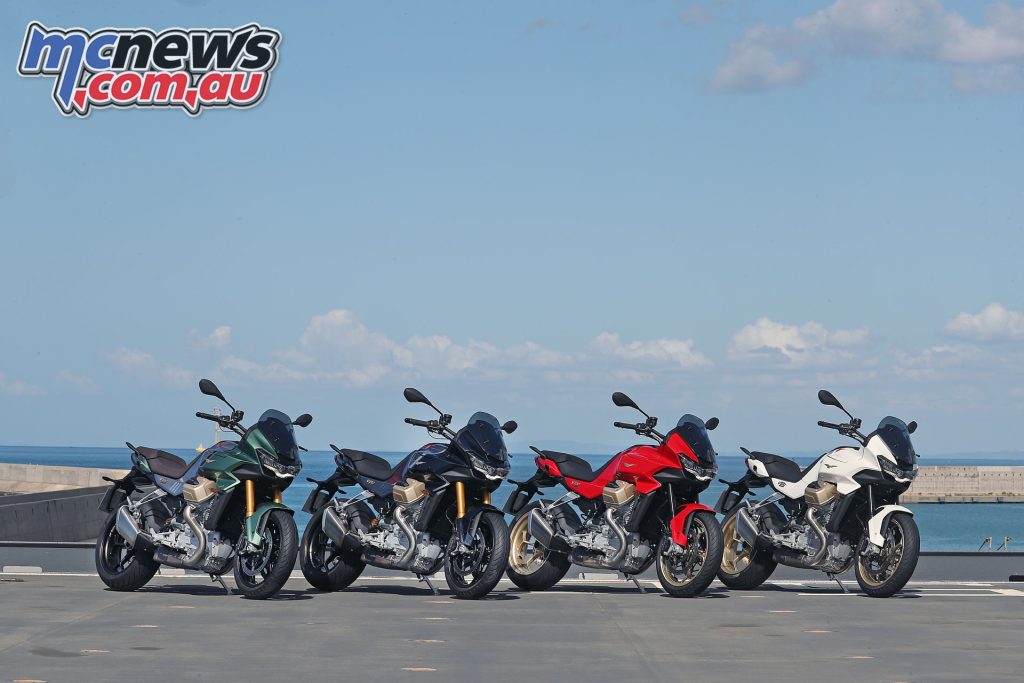
We’ve just had pricing and arrival confirmed, and the Moto Guzzi V100 Mandello will be available in the Bianco Polare or Rosso Magma colour schemes for $28,290 ride-away in late-May 2023 in Australia.
The up-spec Moto Guzzi V100 Mandello S will be available in the Verde 2121 colour version or in Grigio Avanguardia, for $32,290 ride-away also in late-May 2023.
In the meantime Moto Guzzi have released a bit more information about these machines including the spec sheet, so here’s a deep dive into what’s on offer.
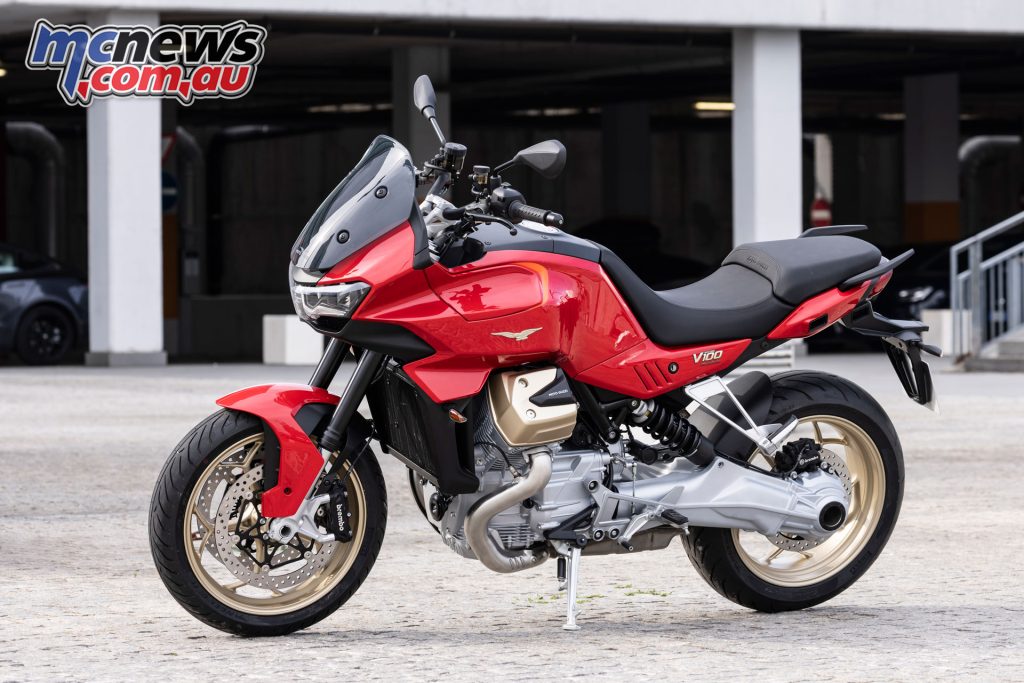
We already knew about the 90-degree transverse V-twin with liquid cooling and double overhead camshaft plus four valves per cylinder, with a capacity of 1042 cc.
The bore and stroke is 96 x 72 mm, with wet sump lubrication, and crank chamber separated from the oil pan by a reed valve.
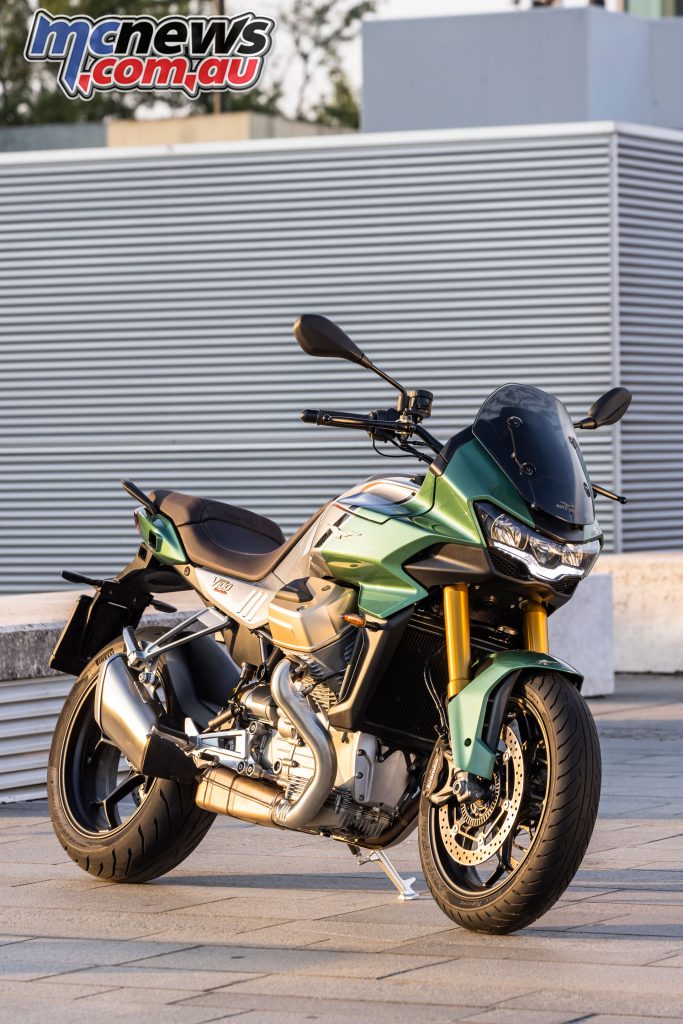
Maximum power hits 115 hp at 8700 rpm and torque maxes out at 105 Nm at 6750 rpm, however 82 per cent of that torque is already available at 3500 rpm. Not earth shattering figures in the world of 200 hp superbikes, but a marked step up for Guzzi in the performance stakes.
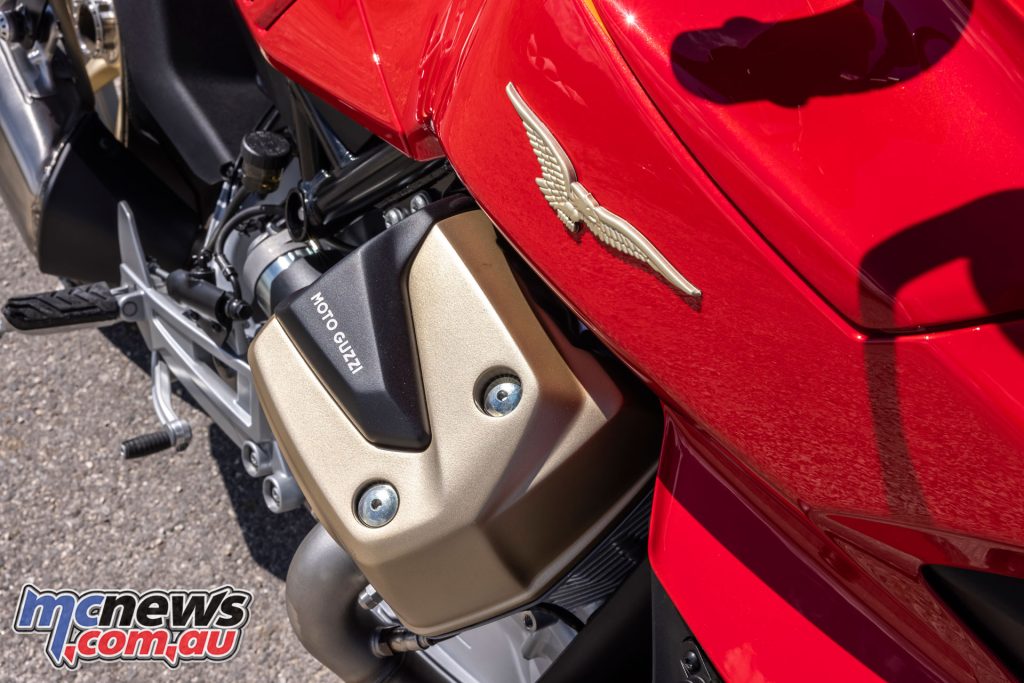
Inertia is massively reduced – by 50 per cent compared to the 1200 8V engine which was a touch point for the manufacturer partly thanks to a smaller and lighter counter-rotating crankshaft..
The new hydraulic multi-plate wet clutch with anti-juddering system, is claimed to be more robust and reliable, along with being much more compact and lighter than the single-plate dry clutch run until now by Guzzi.
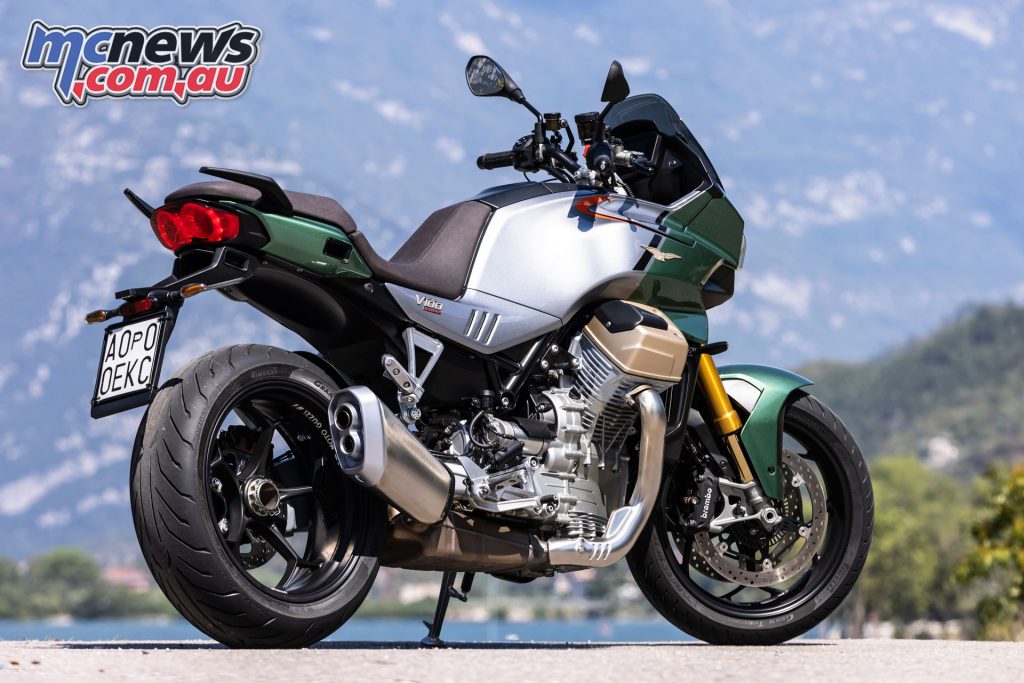
The alternator also runs in a new and more advantageous position, placed inside the V of the cylinders.
Dual throttle bodies have shorter, straighter high turbulent ducts that optimise the supply of air/fuel mix to the combustion chambers.
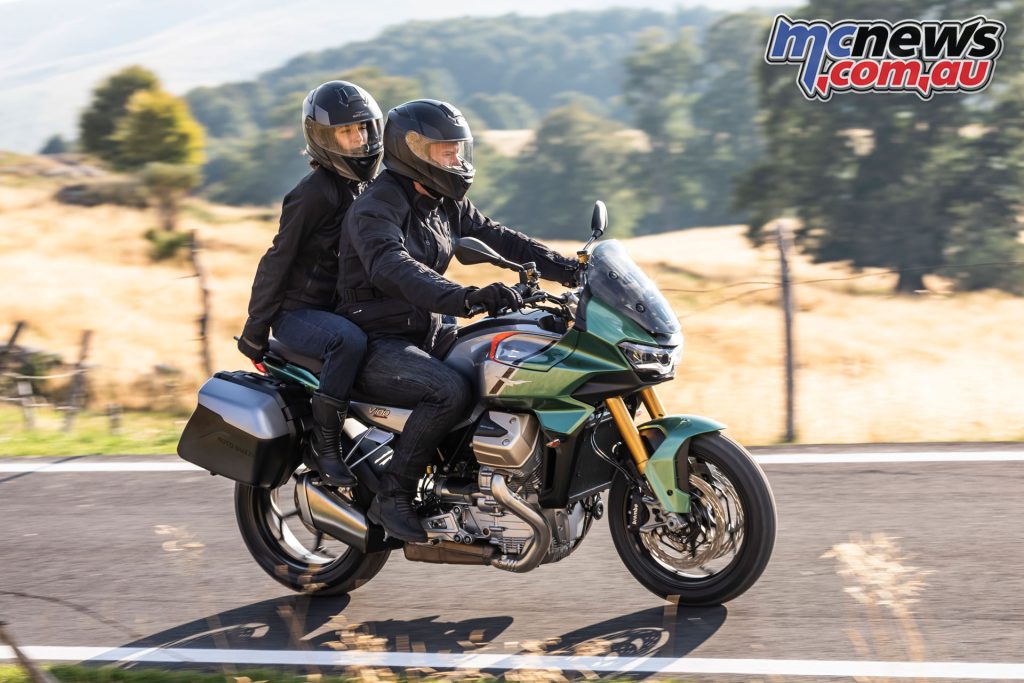
The double overhead camshaft with finger followers allows for more aggressive valve lift, which benefits performance but also makes for ideal combustion, by eliminating fuel waste.
Ride-by-Wire ensures delicate throttle management with Moto Guzzi promising no snatchiness or on-off effect when opening/closing.
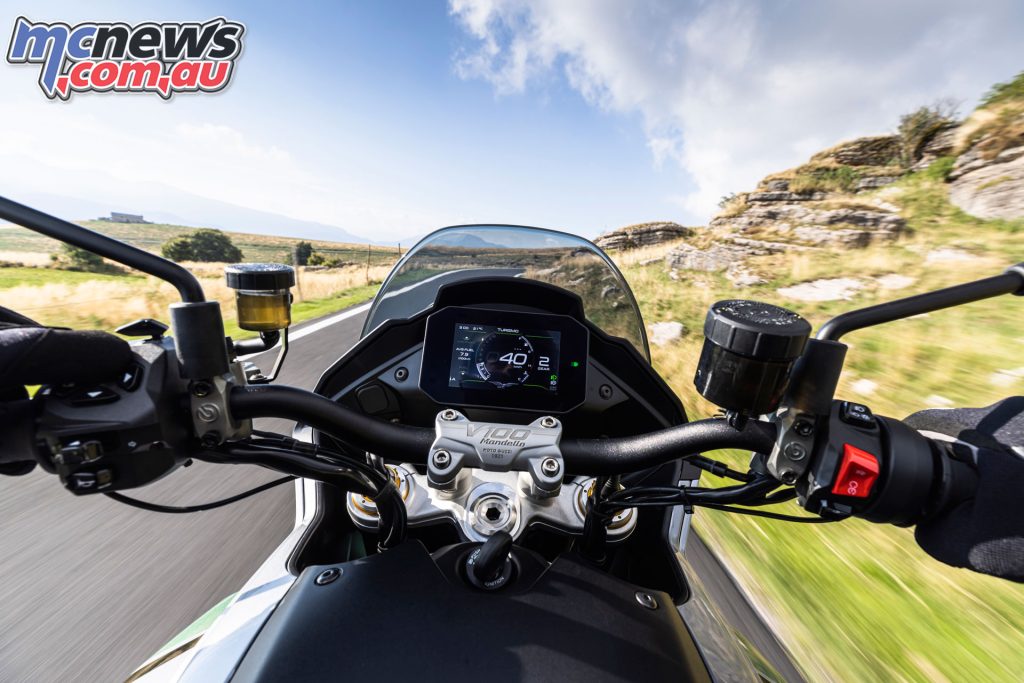
The new powertrain is also significantly quieter than that of previous 1200 8V engines. Rotation of the cylinder heads allowed for the design of an exhaust system with two curvy manifolds that merge into a dual-outlet exhaust tip.
The manifolds run protectors to deviate hot air flow away from the rider’s legs, which is sure to be a boon during hot Aussie summers.
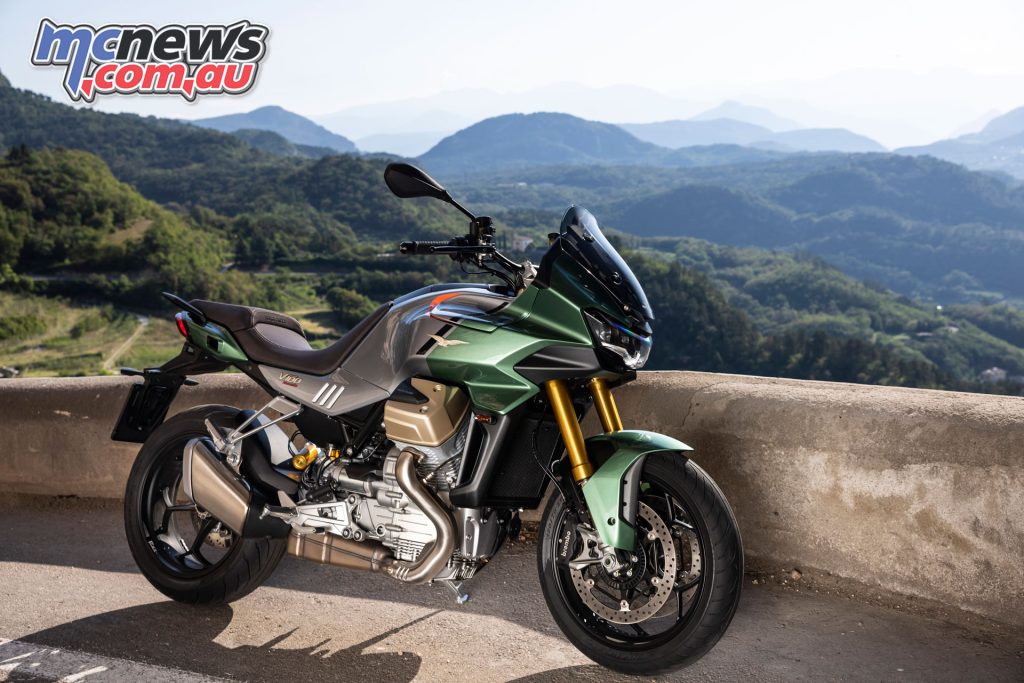
The six-speed gearbox runs patented technology already seen on the V85 TT, reducing freeplay and any delay in shifting for smooth, rapid gear changes, but is a new design specifically for this engine.
This means allowing the adoption of a quick shift system to be introduced on a Moto Guzzi engine for the first time, and is standard on the V100 Mandello S.
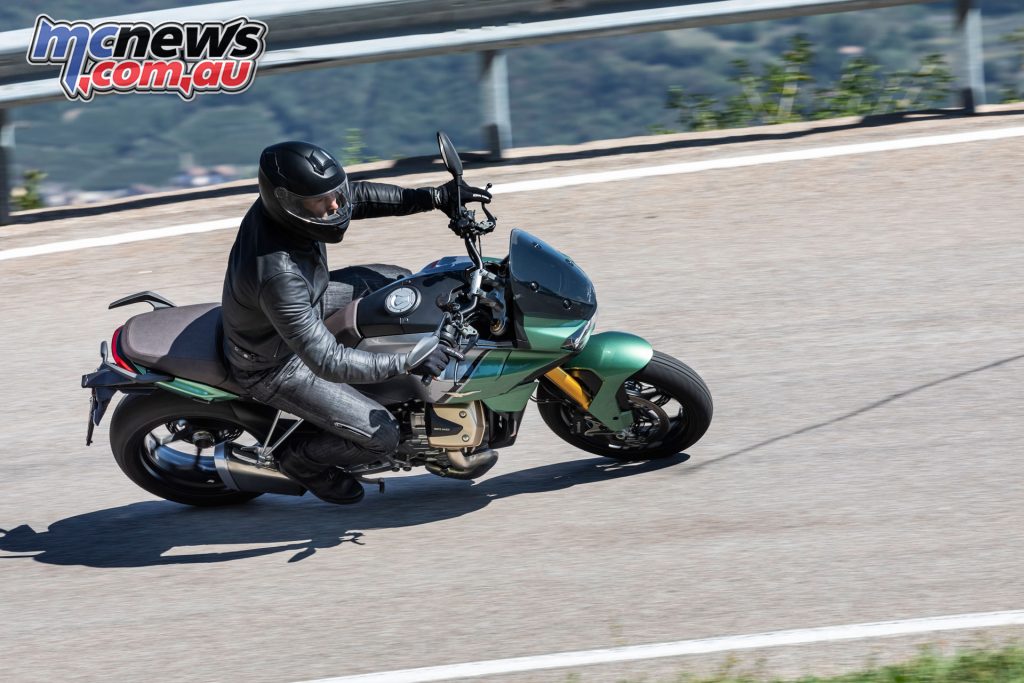
Modern design has ensured great fuel consumption, with Guzzi quoting 4.7 l/100 km and maintenance costs should likewise be competitive, with a scheduled service interval of 12,000 km.
The cardan final drive makes use of an aluminium single-sided swingarm now positioned on the left side. The transmission shaft is positioned much lower, alongside high longitudinal development of the swingarm according to Guzzi, which controls the lift effect when the throttle is first opened with no need to use reaction rods on the swingarm.
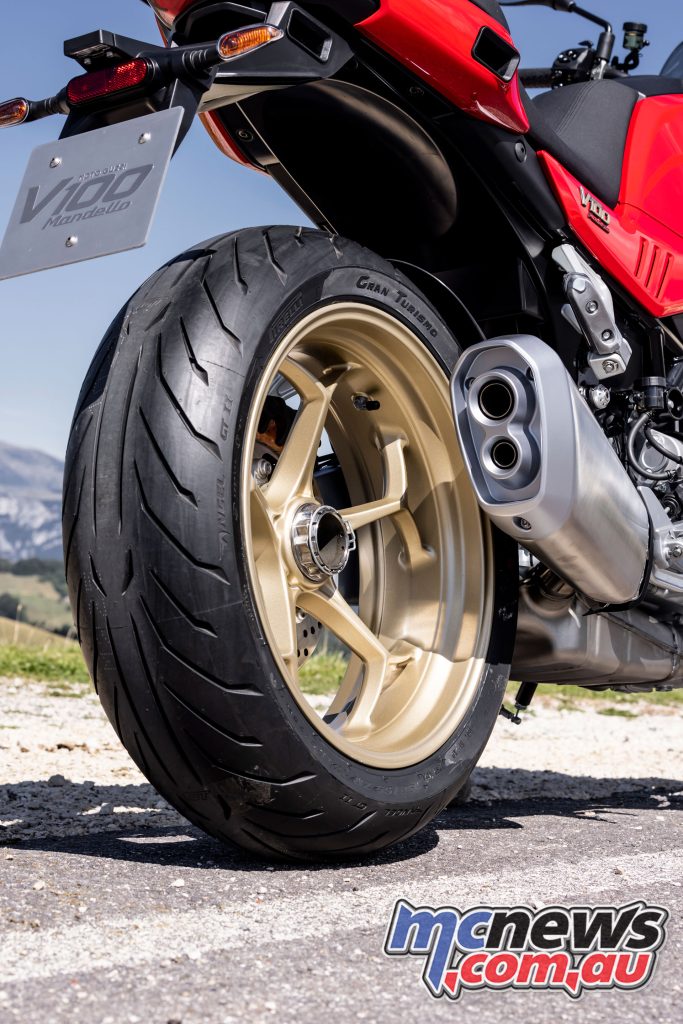
That means the advantages of a chain drive but also with all the advantages of the cardan (less maintenance and greater cleanliness).
This system is unique with one universal joint on the swingarm pivot tilted by 6°, reducing weight and benefiting ergonomics, and also for the fact that the bevel gear is positioned at 84° and not 90° like all other Moto Guzzi.
This allows the swingarm to accommodate a generous 190/55 tyre, mounted on a six-inch rim.
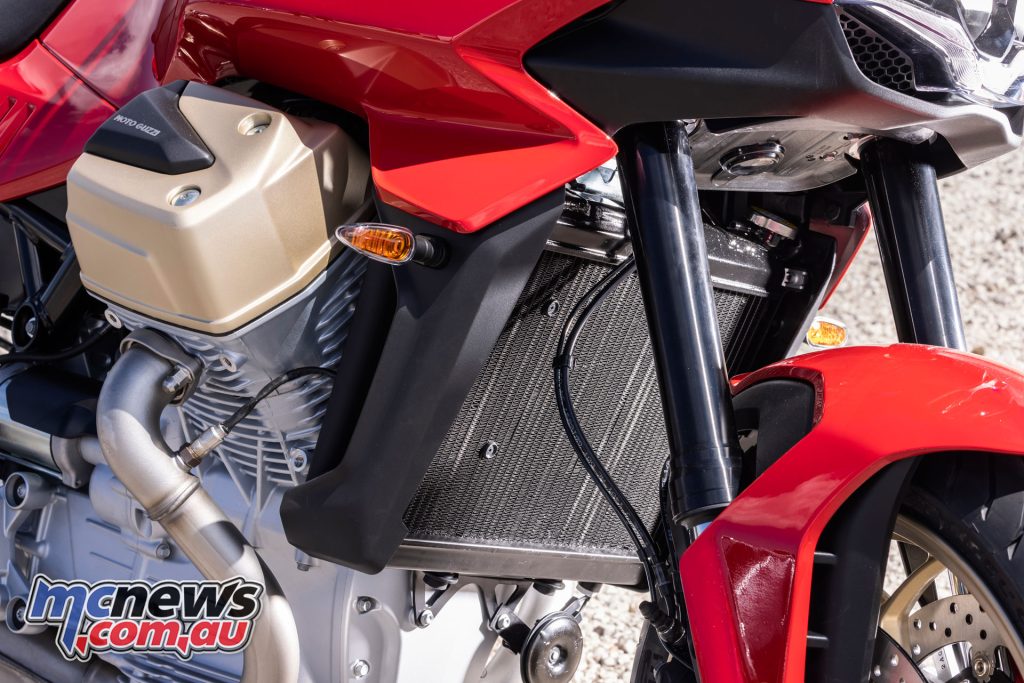
The chassis consists of a steel tube frame that exploits the engine as a load-bearing element, running the six-mounts previously mentioned. A 1475 mm wheelbase and headstock angle of 24.7° were chosen by Guzzi for agility and sportiness.
A generous saddle is just 815 mm from the ground, making for an enticing perch even for shorter riders, with a variable-section aluminium handlebar running the controls. There’s also an optional 800 mm low seat, and 835 mm high seat from the accessories range.
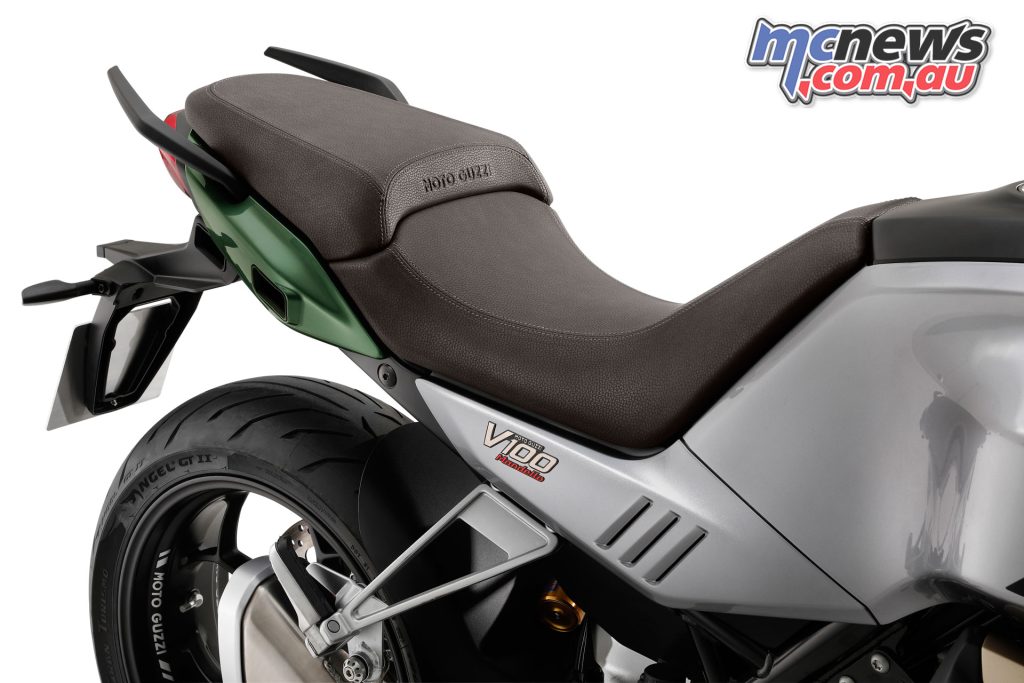
Two-person travel was an extremely important factor and the and the pillion can count on a large padded portion of saddle and practical grab handles.
Dipping into the accessory catalogue you can also run the case fastening system that is virtually invisible when cases aren’t being run. Then to affix cases, the rider just lifts the passenger seat and positions the case hooks in the dedicated housing.
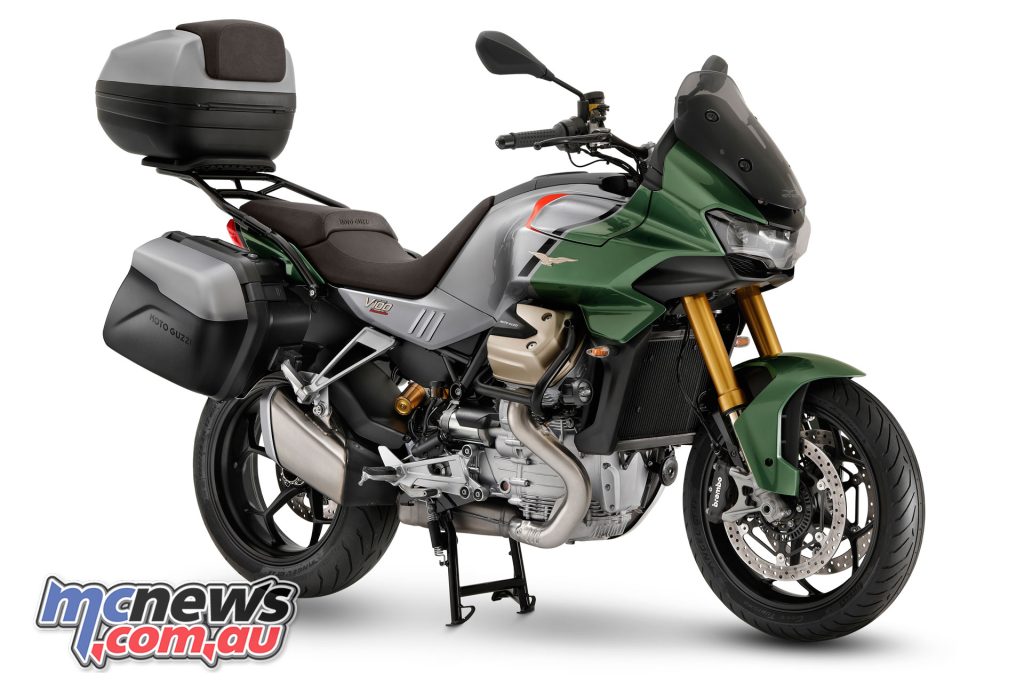
Suspension varies between the two models, as a primary consideration. The V100 Mandello adopts a Kayaba 41 mm fork with adjustable rebound and spring preload, with a shock by the same company, including rebound and spring preload.
The V100 Mandello S takes things up a notch with an Öhlins Smart EC 2.0 semi-active suspension system, which updates moment to moment. The ECU running the Öhlins Smart EC 2.0 suspension has access to all the bike’s electronic systems, and calibrates the fork, shock absorber and steering damper hydraulics to suit.
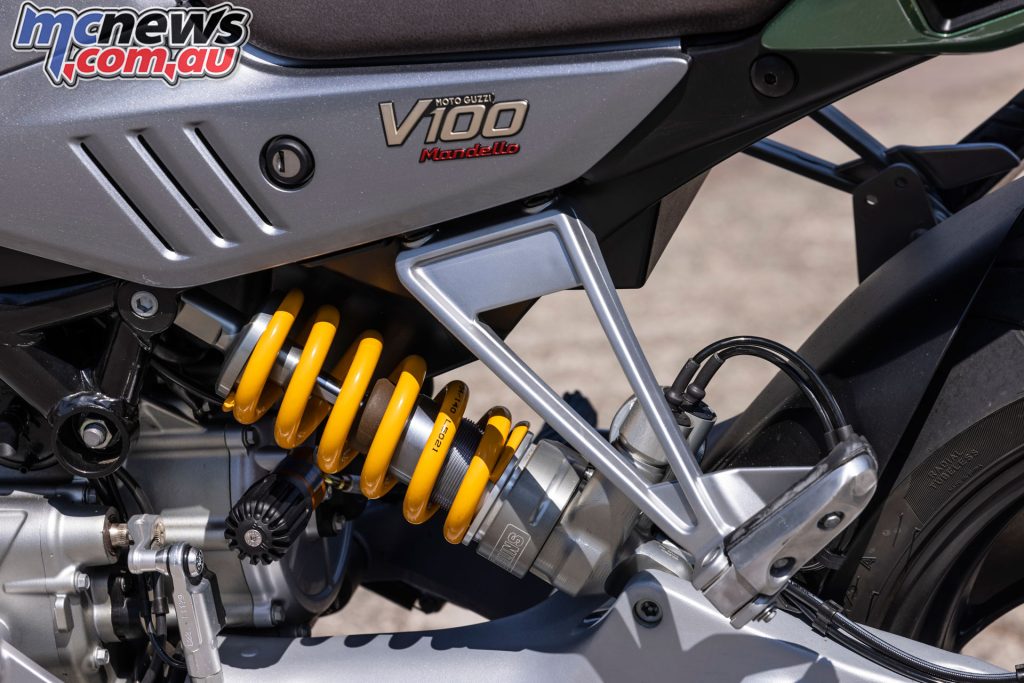
The Smart EC 2.0 semi-active suspension system allows custom calibration of the fork and shock absorbers with two operating modes, semi-active and manual, selectable via the handlebar.
Two maps, Comfort and Dynamic, adjust the suspension in different ways in the semi-active mode. Comfort as you’d expect is focused on… comfort. The Dynamic mode is designed for sports riding in comparison, so we should expect a sharper and more taut feel with this selected.
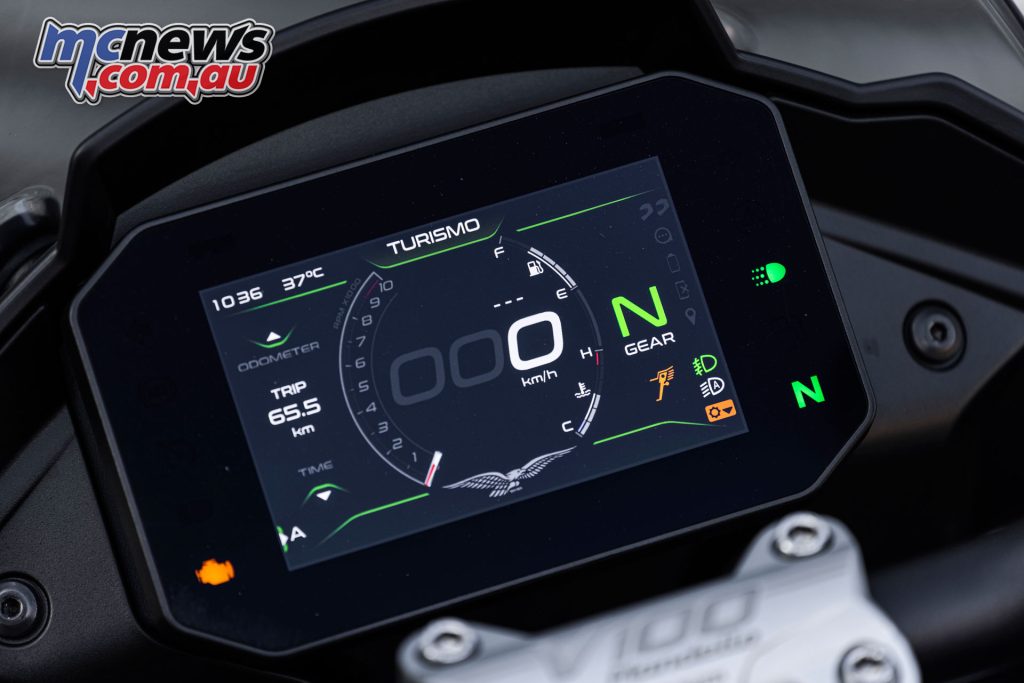
In manual mode the two maps offer two types of predefined calibration without semi-active assistance, in the same way that conventional adjustable suspension systems operate.
In both semi-active and manual mode, the rider still has the possibility to fine tune suspension calibration based on personal taste and riding style.
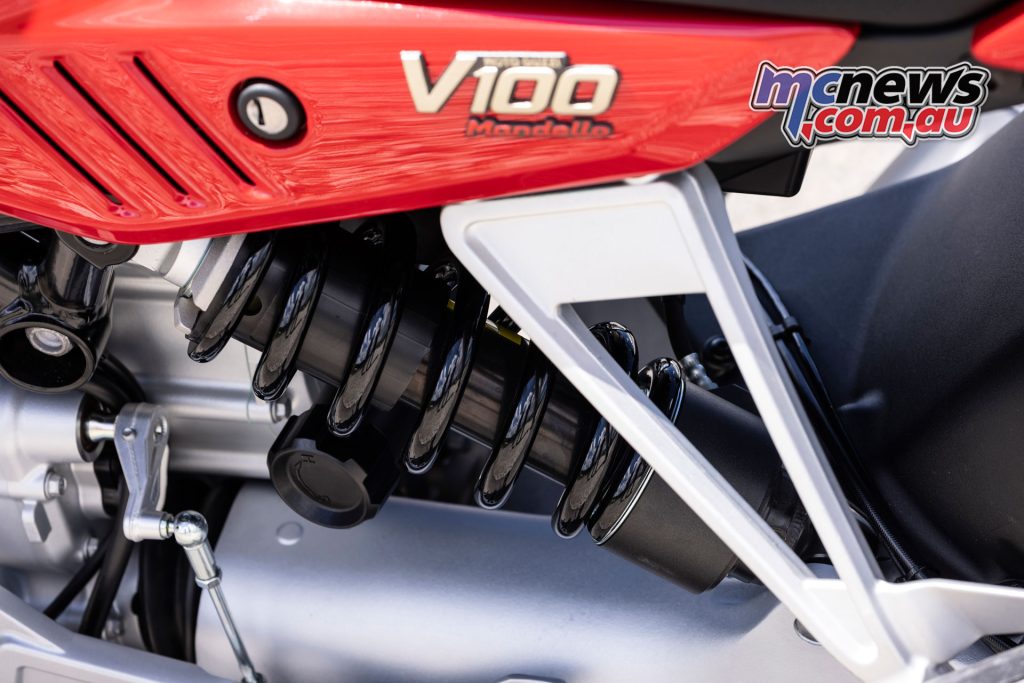
This is done via the OBTi (Objective Based Tuning Interface), visible on the colour TFT instrumentation of Moto Guzzi V100 Mandello S.
The OBTi is based on the goals the rider wants to achieve, for example, greater support during braking if the rider wants more controlled bottoming of the NIX fork, or greater support in acceleration from the TTX shock absorber when opening the throttle.
Manual adjustment of the shock (via the manual control) and fork spring pre-load is also possible.
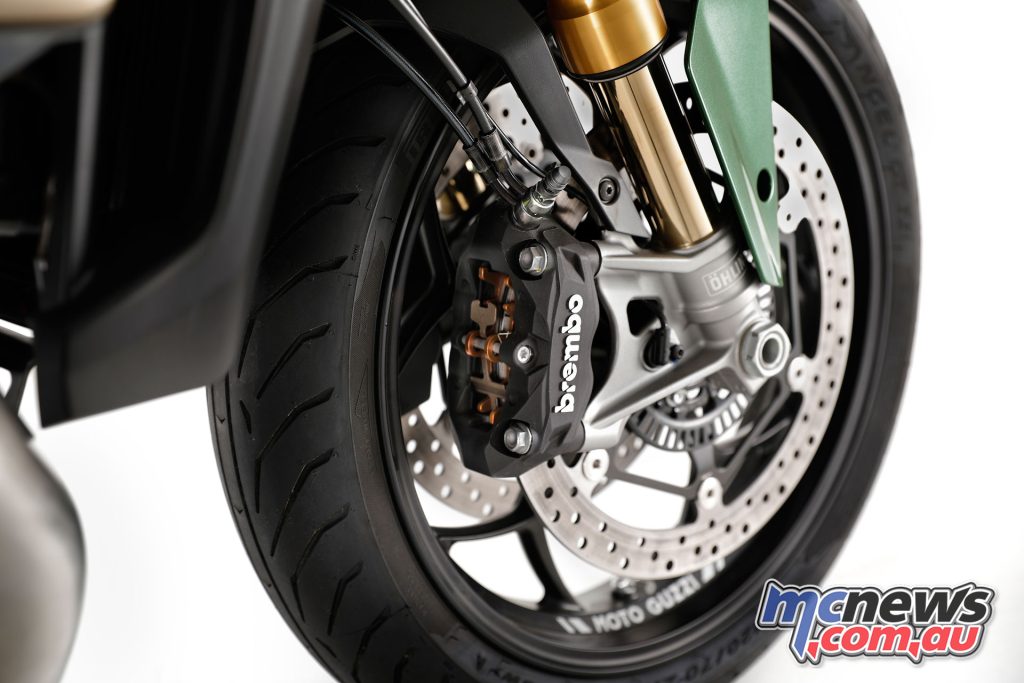
The Brembo braking system sees radial calipers mated to a pair of 320 mm floating steel rotors. The master cylinder is also radial, as is that of the clutch, and both have levers that are adjustable.
Alongside the Marelli 11MP ECU is the six-axis inertial platform, allowing for Cornering ABS, developed in collaboration with Continental.
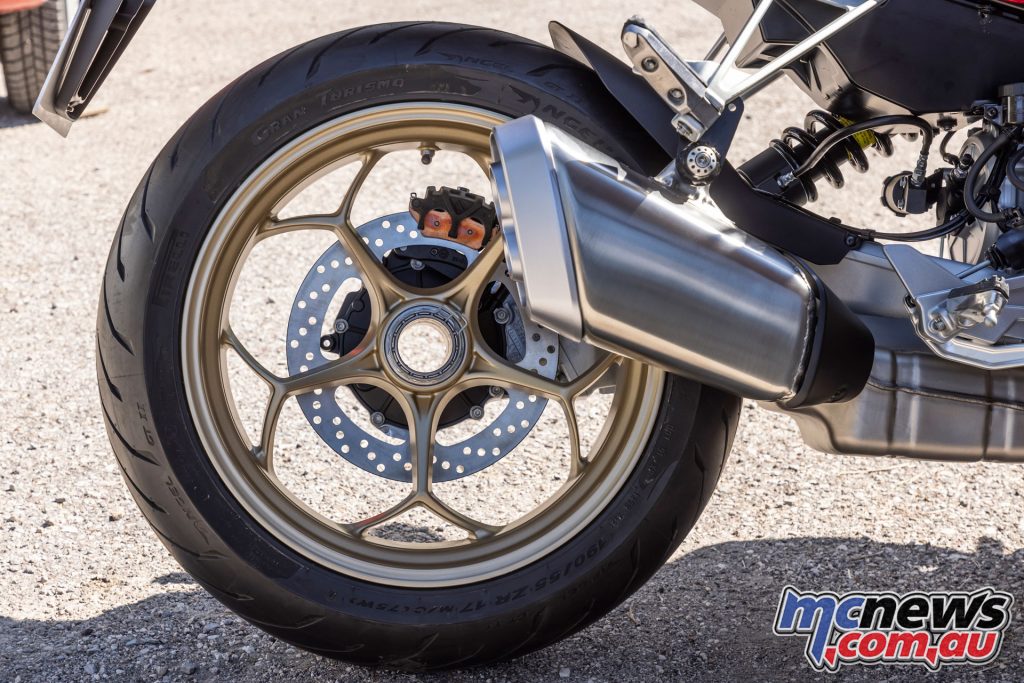
The rear brake is a relatively large 280 mm rotor with two-piston calliper. Both Moto Guzzi V100 Mandello versions are equipped with Pirelli Angel GT II tyres as standard fitment.
All up the bike weighs in at 233 kg wet, or 212 kg dry, with a wheelbase of 1475 mm, width of 835 mm and rake and trail or 24.7 degrees and 104 mm respectively.
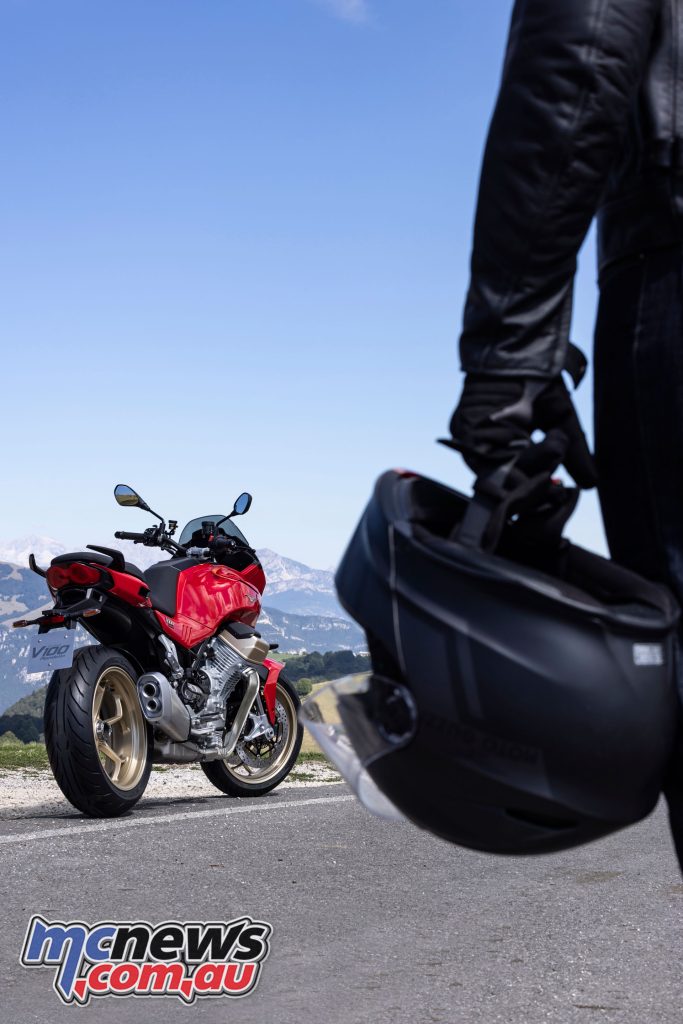
Big news on the V100 was also the adoption of adaptive aerodynamics, which automatically adjusts the position of deflectors on the sides of the tank depending on the speed and selected Riding Mode.
The electronically-adjusted top fairing (or screen for the non-Italians) and fully opened deflectors reduce air pressure on the rider by 22%, bringing the V100 Mandello closer to the level of protection afforded by larger and less sporty touring models.
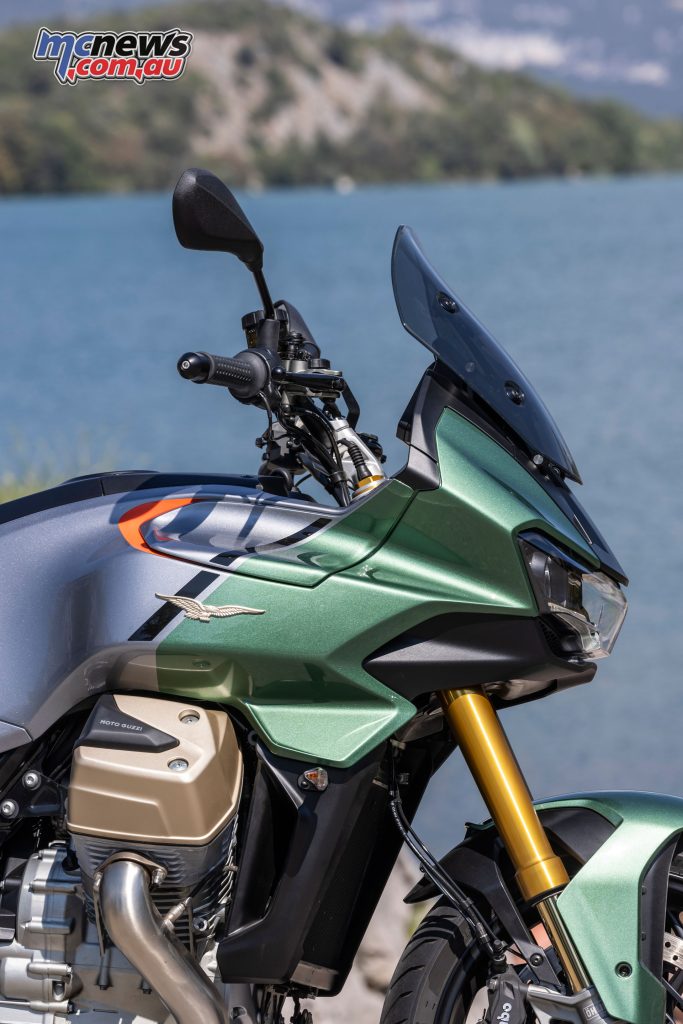
The threshold for the opening of the deflectors can be adjusted by the rider to a speed other than the originally 70 km/h, within a range between 30 and 95 km/h. They will automatically close when the speed drops 20 km/h below the opening threshold to avoid continual opening and closing, in traffic or when travelling at the threshold speed for example.
The screen uses a button on the left electronics block with a generous maximum travel of 90 mm.
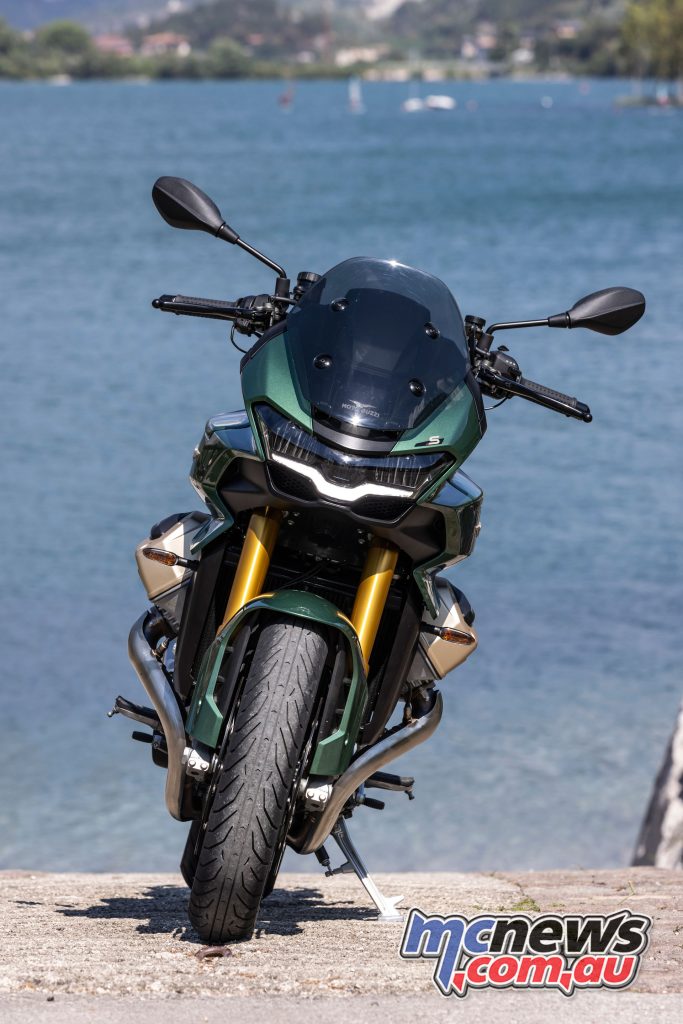
Four Riding Modes include Tour, Rain, Road and Sport, each of which manages three different types of engine mapping, four levels of traction control, two levels of engine braking, the opening of the side deflectors and, on the V100 Mandello S version, calibration of the Öhlins Smart EC 2.0 semi-active suspension.
The standard equipment is rounded out with the full LED light cluster with DRL, the “bending lights” system or cornering lights which illuminates the inside of the turn, increasing visibility when leaning).
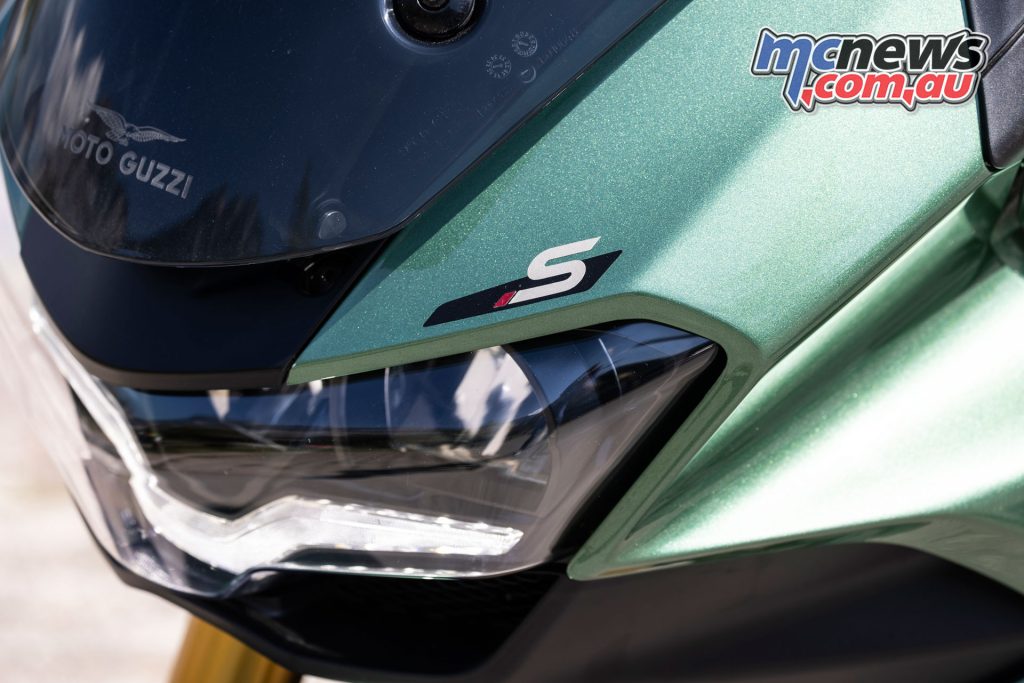
There’s also a USB port located in the storage compartment beneath the passenger seat and cruise control.
The 5″ TFT colour instrumentation provides data such as fuel level, air temperature, cooling liquid temperature, selected gear, range and live consumption.
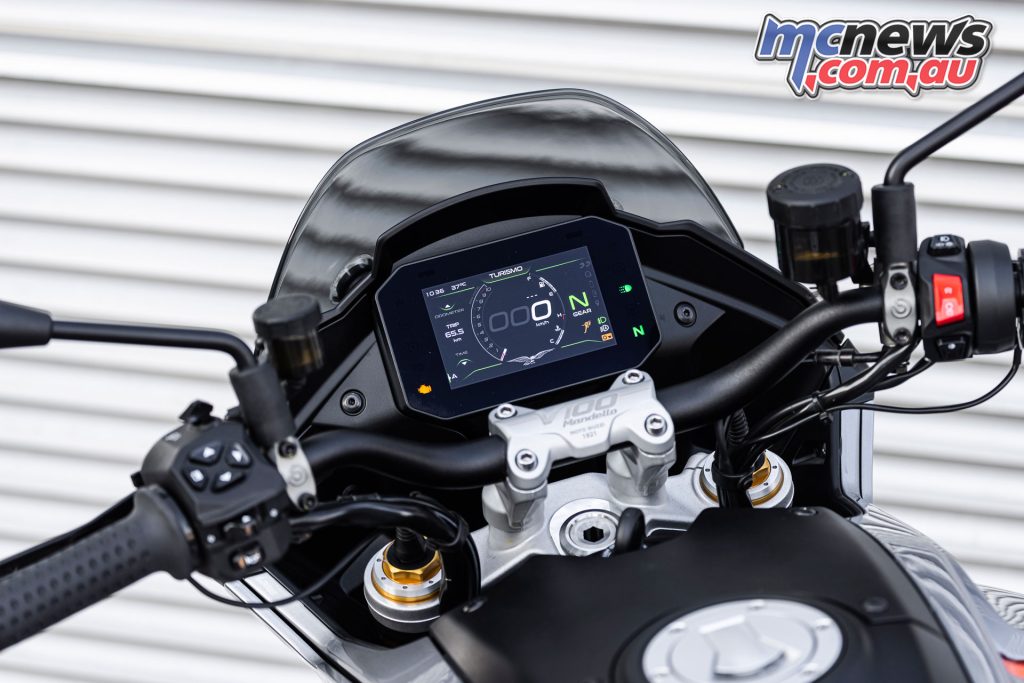
Moto Guzzi MIA (the multimedia platform) allows a smartphone to be connected to the instrumentation via Bluetooth, extending its functions as an accessory.
Moto Guzzi MIA includes both the infotainment system for management of the voice assistant, phone calls and music via the intuitive handlebar controls, and the GPS function, which allows the rider to view directions directly on the instrument panel once a destination is set on the smartphone.
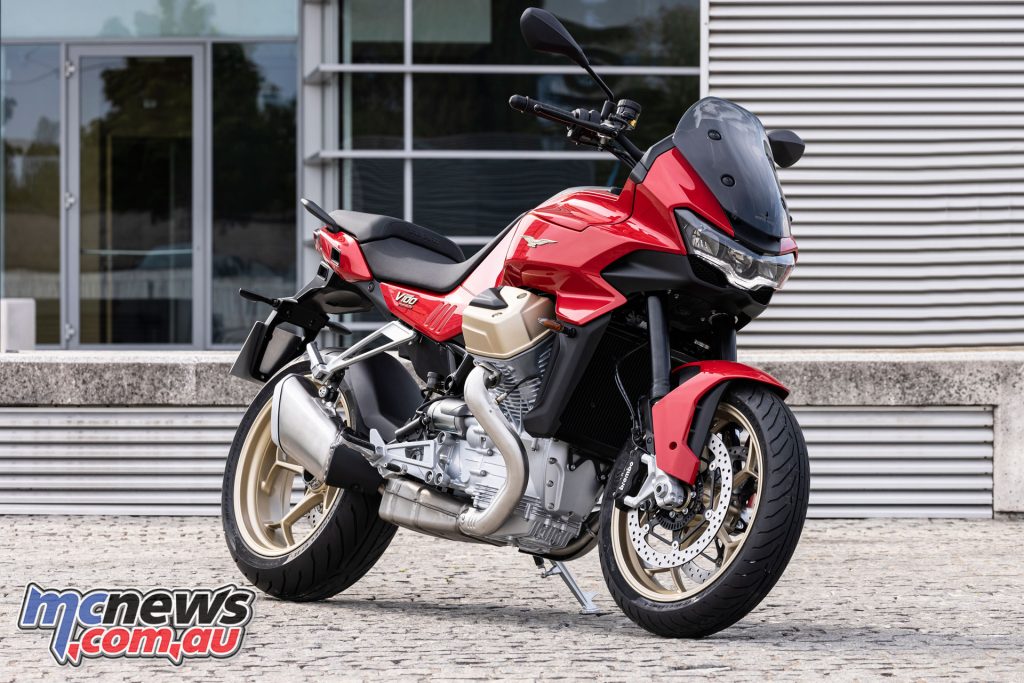
The bike is available in two versions, the base Moto Guzzi V100 Mandello comes packed with standard equipment, including the full LED lighting system with DRL and all the electronics described. The Kayaba suspension is mechanically adjustable. The dedicated colour schemes are: Bianco Polare with matte gold rims, or Rosso Magma with bright red rims.
In addition, there is the V100 Mandello Aviazione Navale, a limited edition made up of just 1913 numbered units to commemorate the bond between Moto Guzzi and the Italian Navy.
The origins of the eagle with outstretched wings, the emblem of Moto Guzzi right from its foundation in 1921, lie in the shared military bond of founders Carlo Guzzi and Giorgio Parodi, in the Air Service of the Royal Navy during World War One.
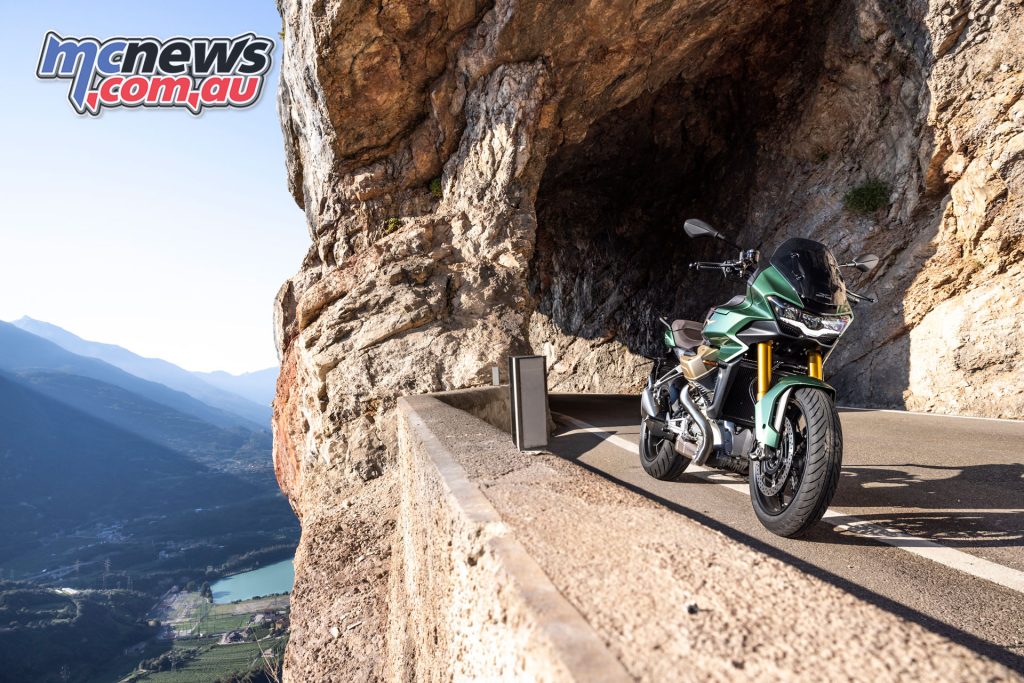
The standard equipment package includes the TPMS tyre pressure sensor and heated hand grips, while the serial number is laser-engraved onto the handlebar riser. Each bike comes with a dedicated bike cover and a commemorative plate.
The premium version is the V100 Mandello S and includes Öhlins Smart EC 2.0 semi-active suspension, quick shift, heated hand grips, TPMS (tyre pressure indicator) and the Moto Guzzi MIA system as standard.
The V100 Mandello S is available in: Verde 2121 (green and grey) used on the 8 Cilindri; or in Grigio Avanguardia and both versions come with matte black painted rims.
See below for specifications and galleries.
2023 Moto Guzzi V100 Mandello [S] Specifications
| 2023 Moto Guzzi V100 Mandello [S] Specifications | |
| Type | Liquid-cooled 90° transverse V-twin. Double overhead camshaft timing with finger followers and four valves per cylinder |
| Capacity | 1042 cc |
| Bore x stroke | 96 x 72 mm |
| Compression ratio | 12.6 : 1 |
| Max Power | 115 hp (84.6 kW) at 8700 rpm |
| Max Torque | 105 Nm (10.7 kgm) at 6750 rpm |
| Fuel system | Electronic injection; 52 mm double throttle body, Ride-by-Wire |
| Fuel capacity | 17 litres (including 3.5 litre reserve) |
| Emissions compliance | Euro 5 |
| Consumption (WMTC cycle) | 4.7 l/100 km |
| CO2 Emissions (WMTC cycle) | 118 g/km |
| A/C generator | 550 W |
| System voltage | 12 V |
| Battery | 12V – 12 Ah |
| Clutch | Hydraulic multi-plate wet clutch with anti-juddering system |
| Transmission | Six speed [Six speed with electronic quick shift system] |
| Primary drive | Straight cut gears and integrated flexible coupling, gear ratio: 31/48 (1.548) |
| Secondary drive | Cardan shaft: Drive ratio: 12/38 (3.166) |
| Electronics | Three engine mappings (MGCM), Two level engine brake control (MGFM), four level traction control (MGTC), cruise control. Four Riding Modes (Tour, Rain, Road, Sport) [Quick shift] |
| Chassis | High strength steel tubular frame |
| Front suspension | Hydraulic telescopic 41 mm USD fork, adjustable in spring preload and rebound [Öhlins Smart EC 2.0 semi-active fork, 43 mm USD with superficial TIN treatment, fully adjustable] |
| Front travel | 130 mm |
| Rear suspension | Aluminium single-sided swingarm with left-hand single shock, adjustable in spring preload, via a knob, and in rebound [Öhlins Smart EC 2.0 semi-active single shock that is fully adjustable and complete with spring preload adjustment via a knob] |
| Rear travel | 130 mm |
| Brakes Front | 320 mm double floating disc in stainless steel, Brembo radial callipers with four opposed pistons and a metal trellis tube, Continental ABS with cornering function |
| Brakes Rear | 280 mm stainless steel disc, Brembo two-piston floating calliper, Continental ABS with cornering function |
| Wheels | Aluminium alloy |
| Wheels | 3.50 x 17in, 6.00 x 17in |
| Tyre | Radial tubeless, 120/70 – R17, 190/55 – R17 |
| Length | 2125 mm |
| Width | 835 mm |
| Wheelbase | 1475 mm |
| Seat height | 815 mm (accessories: low seat 800 mm; high seat 835 mm) |
| Headstock angle | 24.7° |
| Trail | 104 mm |
| Dry weight | 212 kg |
| Kerb weight* | 233 Kg |


























































































































